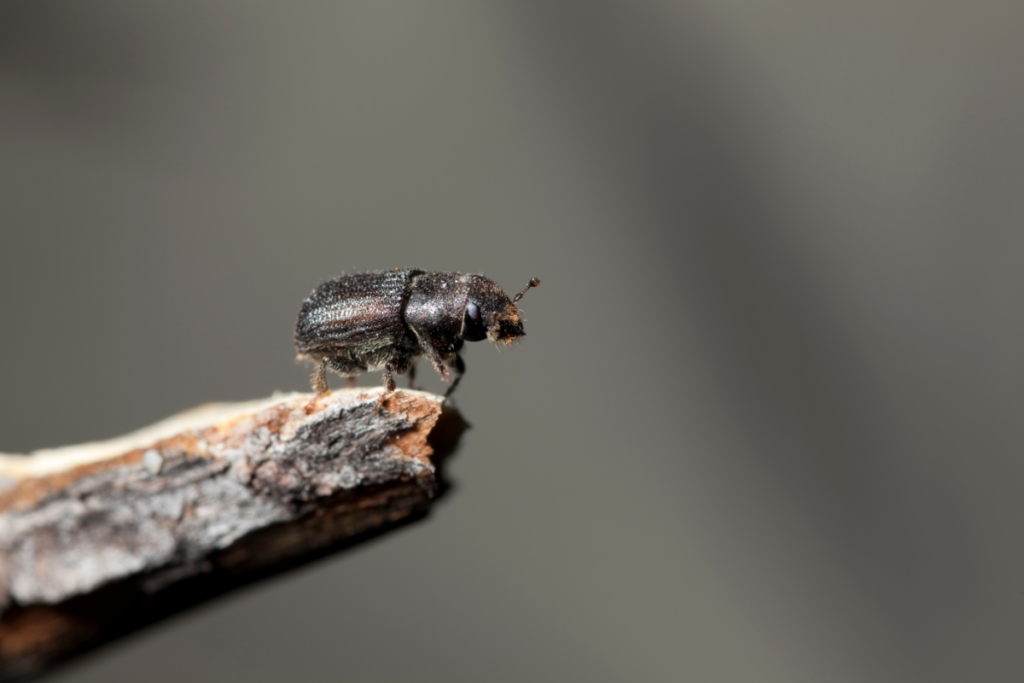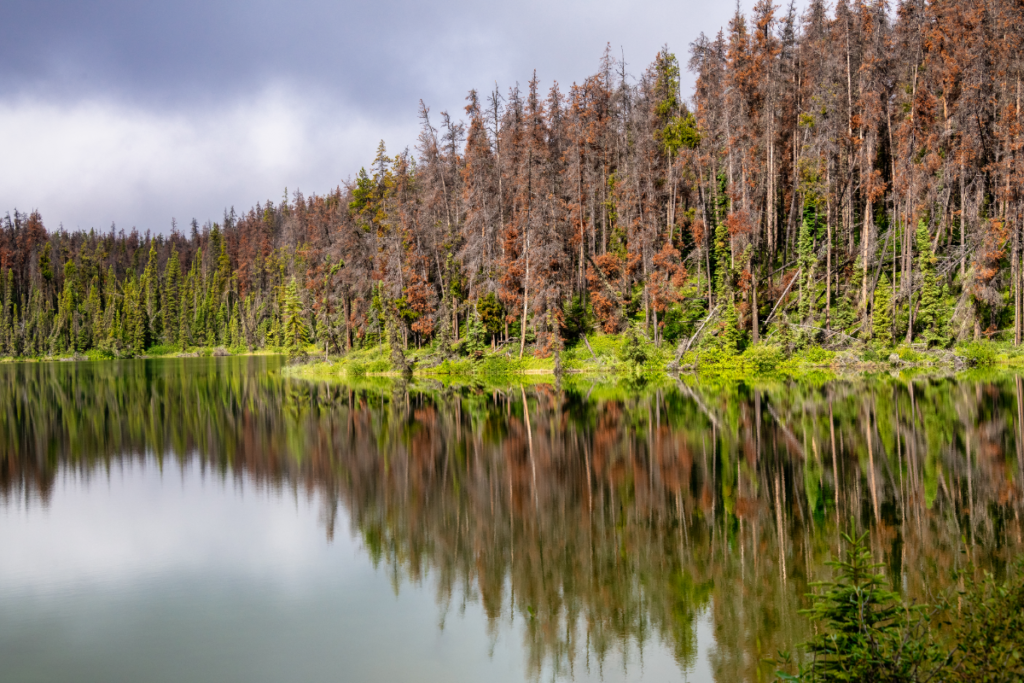Welcome back to the lab!
Mountain pine beetles have a nasty reputation in the Intermountain West. Many are familiar with the term “beetle kill,” and have subsequently seen the damage a beetle infestation can cause. While efforts to control outbreaks have been aggressive, the beetles continue their forward march, leaving North American forests decimated in their wake. But recent research is gaining insight into the resilience of our forests, and a new exhibit at the Missoula Art Museum explores the relationship between beetles and bark in a way never seen before.
The mountain pine beetle lives the majority of its life within the bark of pine trees. When a female beetle finds a tree that is suitable for egg-laying (i.e. a tree that is somewhat frail and whose natural defenses are weakened) she will release an aggregating pheromone, attracting other beetles to the site. The female beetles drill into the bark, piercing the inner bark to lay her eggs in vertical egg galleries; after the larvae hatch, they mine further into the tissue of the tree, essentially severing nutrient transport along the trunk with the aid of “blue stain fungi,” a fungal symbiont introduced by the adult beetles. There, the larvae overwinter, and emerge as adults the following June.

Mountain pine beetles are miniscule. About the “size of a mouse turd,” according to Diana Six, a professor and forest entomologist at the University of Montana. So how does such a small insect cause millions of acres of damage in the span of a couple decades? Trees certainly aren’t without their own defenses: healthy trees are able to essentially flush the beetles out with sap or resin. As Six puts it, “trees can’t hide or flee, so they have to stand their ground and fight.”
So what’s happening to our forests, and why are they suddenly so susceptible to beetle attacks? While some blame poor forest management practices – too much fire suppression, not enough stand thinning, etc. – the most damning evidence points towards climate change.
There are multiple factors at play as temperatures rise. Not only are trees stressed from heat and drought, but beetles are thriving. Once upon a time, it took a full year for a mountain pine beetle to complete its life cycle. As temperatures climb, larval development goes into overdrive, and many scientists are reporting two generations of beetles in a season, when we used to only have one. Warming temperatures also allow the beetle to expand its range, not only northward into Canada and the Yukon, where it is considered an invasive species, but also physically upward: the whitebark pine, a high elevation pine whose existence is already threatened by a blight known as “blister rust,” is now considered a threatened species thanks to beetle attacks.

Yet as beetle populations grow, so does our knowledge and insight into how trees can survive the devastating impacts of such minuscule marauders. Trees, like every living organism on the planet, have a genetic code unique to each individual. Some of those individuals have won the genetic lottery and are resistant to beetle attacks. In the same way that a person can find out if they are predisposed to a certain disease, researchers want to learn what makes a tree more or less susceptible in order to better inform forest management practices.
To learn more about the mountain pine beetle, check out Below the Bark, a collaborative exhibit at the Missoula Art Museum. Placed squarely at the intersection of art and science (my favorite place to be), Below the Bark sheds a new light on disturbance ecology. Below the Bark runs from October 1st, 2021 – February 26th, 2022.
Until next time, thanks for visiting the lab!
Bug Wrangler Brenna
brenna@missoulabutterflyhouse.org
Want to revisit a previous Notes from the Lab issue? Check out our archive! Do you want to request a subject for an upcoming issue? Email me at the address above and put “Notes from the Lab” in the subject line.
